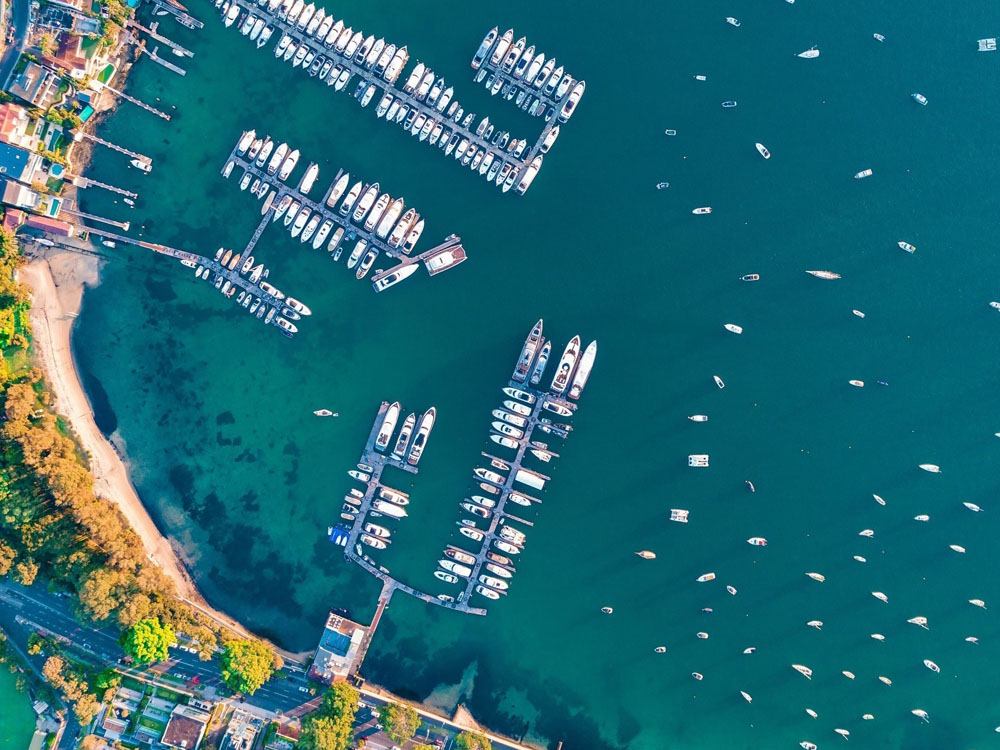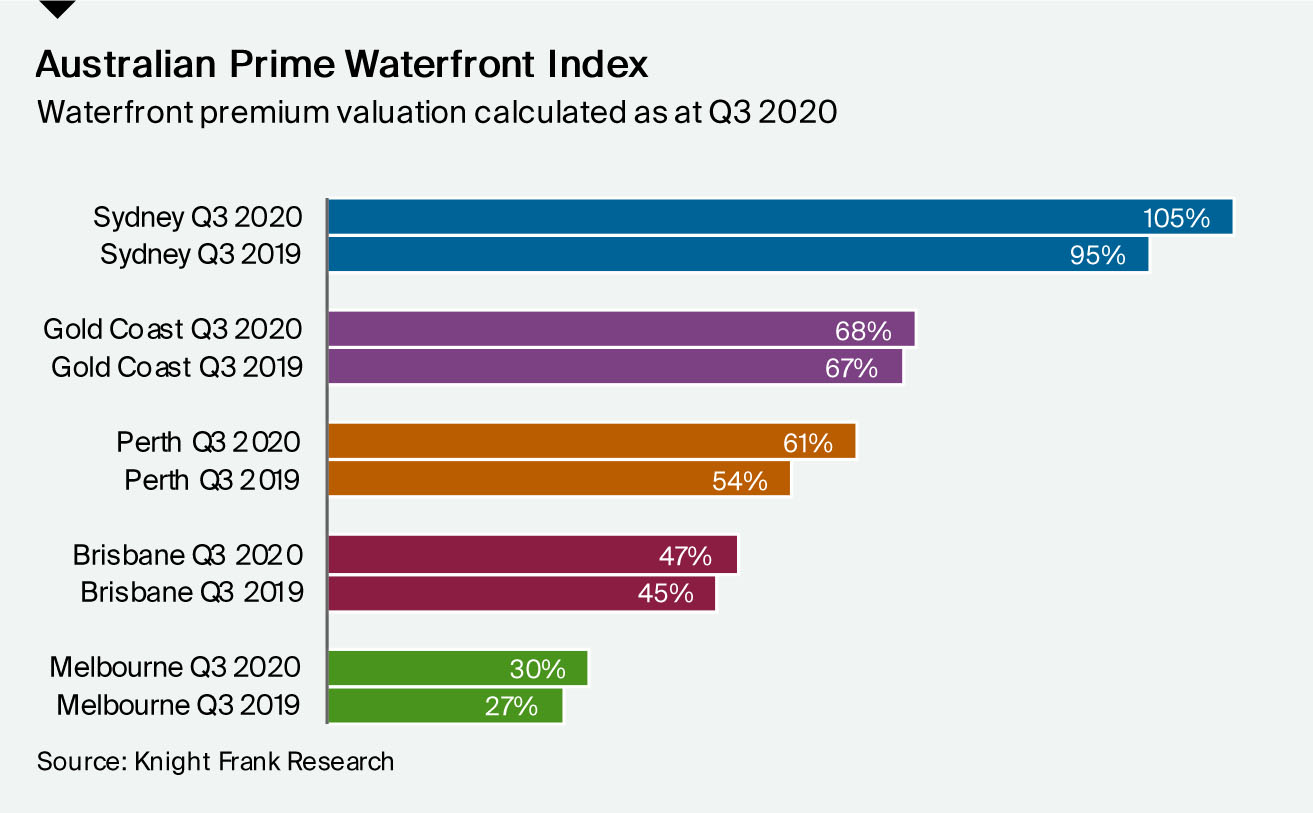Australian Prime Waterfront Index 2021
Knight Frank'S Prime Waterfront Index measures the uplift a waterfront location can add to a property's value across Australia's major cities. This past year has given many the opportunity to reflect on how time at home is best enjoyed - how has this impacted the waterfront premium?
3 minutes to read
Prime waterfront properties across Australia are worth an average 69% more than their inland equivalent in 2020, trending upwards from 63.1% one year ago, as all five cities saw an uptick in their waterfront premium.
Uplift by city
Sydney, the harbour city, continues to be the leader, recording 104.7% in Q3 2020, up from 94.9% in Q3 2019. The steepest uplift was noted in Perth off the-back of a strengthening economy, as the city grew from a waterfront premium of 53.6%, to 61.1%, over the year ending Q3 2020. Melbourne saw an increase in their uplift rate from 27.3% to 30.4% over the same time, the city recovering back to Q32018 levels, as residents recoup from a lengthy pandemic lockdown where waterfront properties are increasingly likely to become a more desirable setting to spend time at home.
Prime residential markets in Brisbane and the Gold Coast have been widely performing well as popular with both relocating interstate families and downsizers. Although many of these budgets would allow for the price point of a waterfront property in these cities, buyers took a more conservative approach in 2020 to record only a slight rise in premium for a waterfront property of 67.9% on the Gold Coast, and 47.4% on the Brisbane River.

Premium by water frontage
Australia is well-placed to offer an array of waterfronts, although these residential properties continue to be tightly held. Prime properties located on the harbour front commanded the largest premium (and also the strongest growth in premium) at 102% in Q3 2020, growing from 97.3% a year earlier.
Over the same time, a coastal frontage rose from 61.4% to 71%, riverfront was 61.1% (up from 57.4%) and improving considerably, frontage canals most prominently on the Gold Coast grew from 49.8% to 55.6%.
Super-prime waterfront sales
The portion of absolute waterfront sales in Australia was 33% in the year ending Q3 2020, when recorded against the total number of super-prime sales. Although this share of sales fell from 36% in Q3 2019, the number of sales grew from 40 to 46, demonstrating the strength of the wider super-prime luxury market. The distribution of waterfront sales varied with harbour front holding the most share with a little over half, coastal and river frontages with one-fifth of sales each, then properties with frontages to canals at 9%.
Over the past five years, the average super-prime waterfront sale price has shifted higher by 43%. In Sydney the average sale price was $21.5 million in the year ending Q3 2020, whilst Brisbane followed with $17.6 million and Melbourne at $16.5 million. In the same timeframe, Perth's average sale price was $13.4 million and Gold Coast was $12.7 million.

Exclusive maritime facilities
Direct access to water and exclusive maritime facilities are a premium many buyers are willing to pay, the Covid-19 pandemic has only amplified this privilege. Further analysis of all Australian super-prime absolute waterfront sales over the past year found 39% had maritime facilities. One in four waterfront sales had a jetty, one in five held a pontoon whilst 15% had a mooring and 7% had a slipway.
Outlook
Super-prime waterfront property tends to be the most liquid in nature, so in times of economic uncertainty, can provide a great investment and it's likely further demand will co me over the coming months, and years. A mid- 2020 Knight Frank global buyer survey revealed 40% are more likely to buy a waterfront residence than prior to Covid-19, reflecting the change in buyer's attitudes towards securing a resort-like lifestyle at home. Privacy is also in demand, 52% say it's more important, so waterfront properties are sure to push beyond the 55% premium currently paid for private beach access.